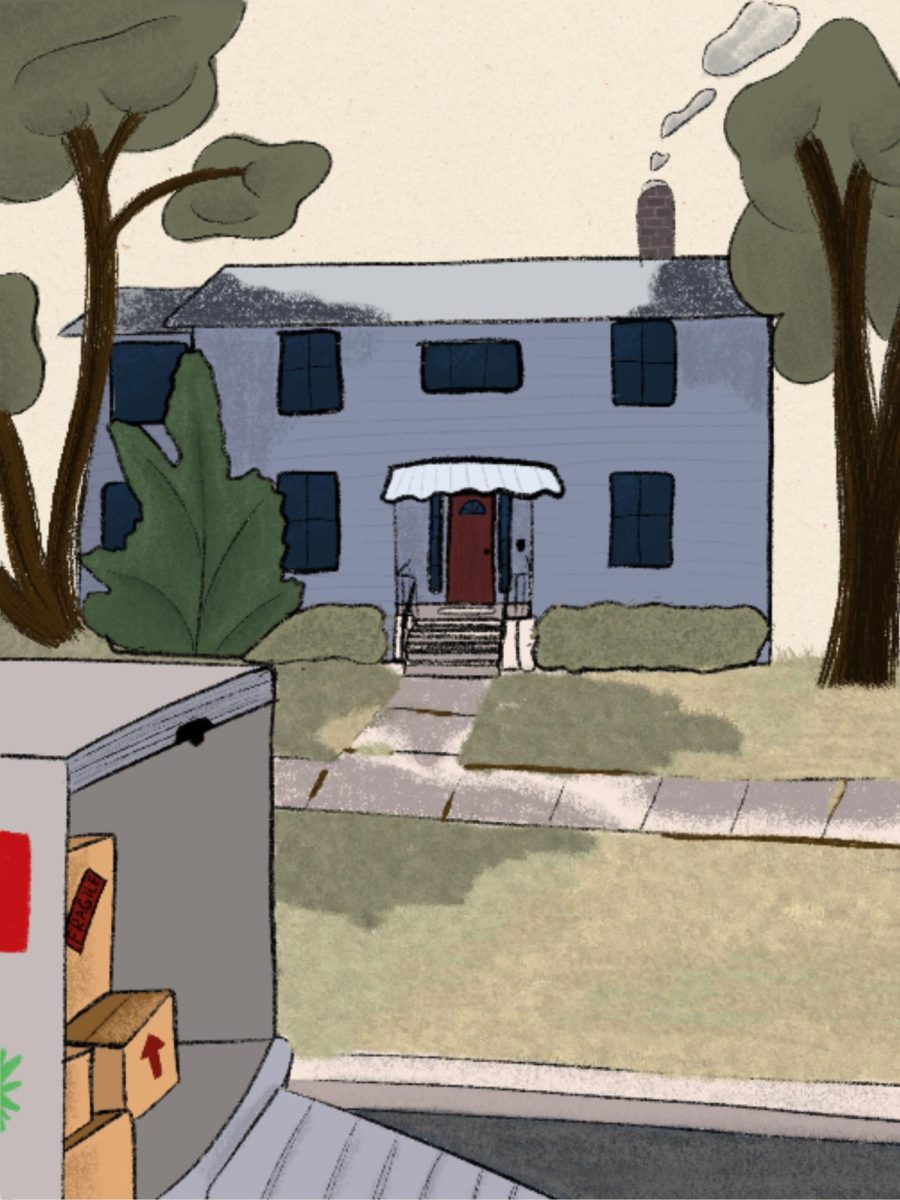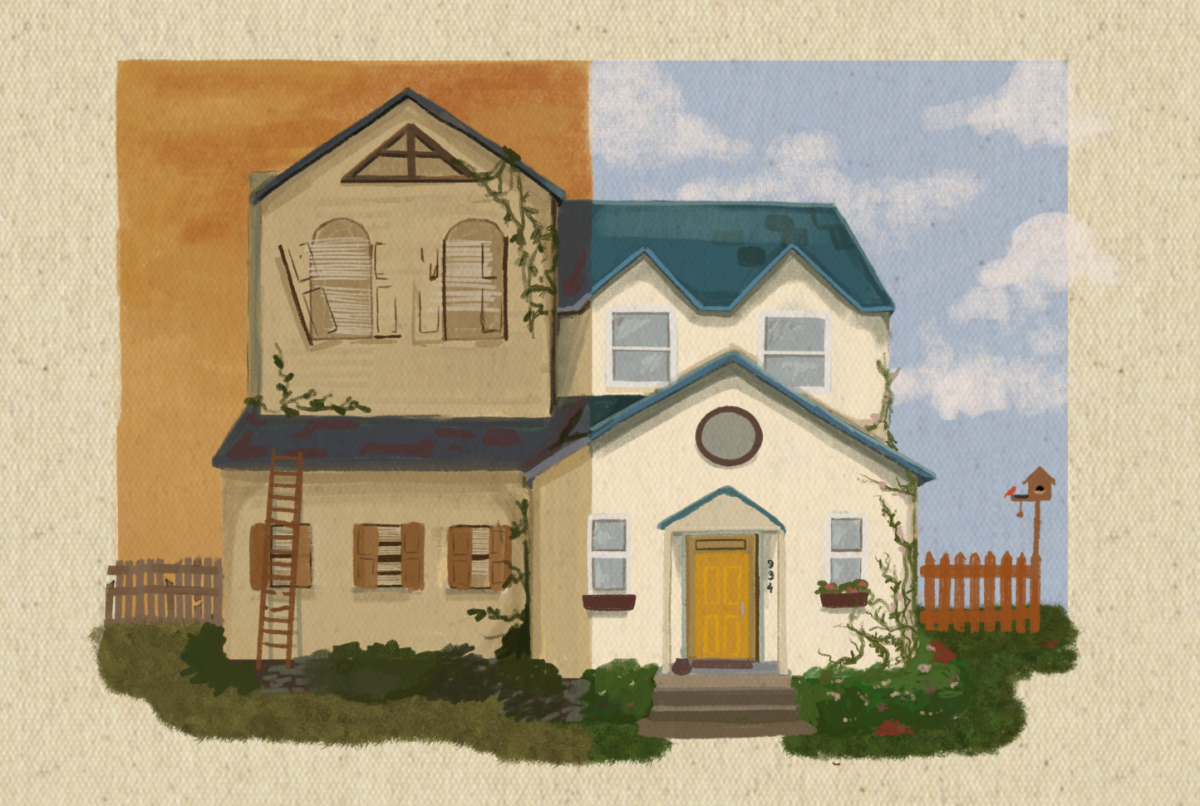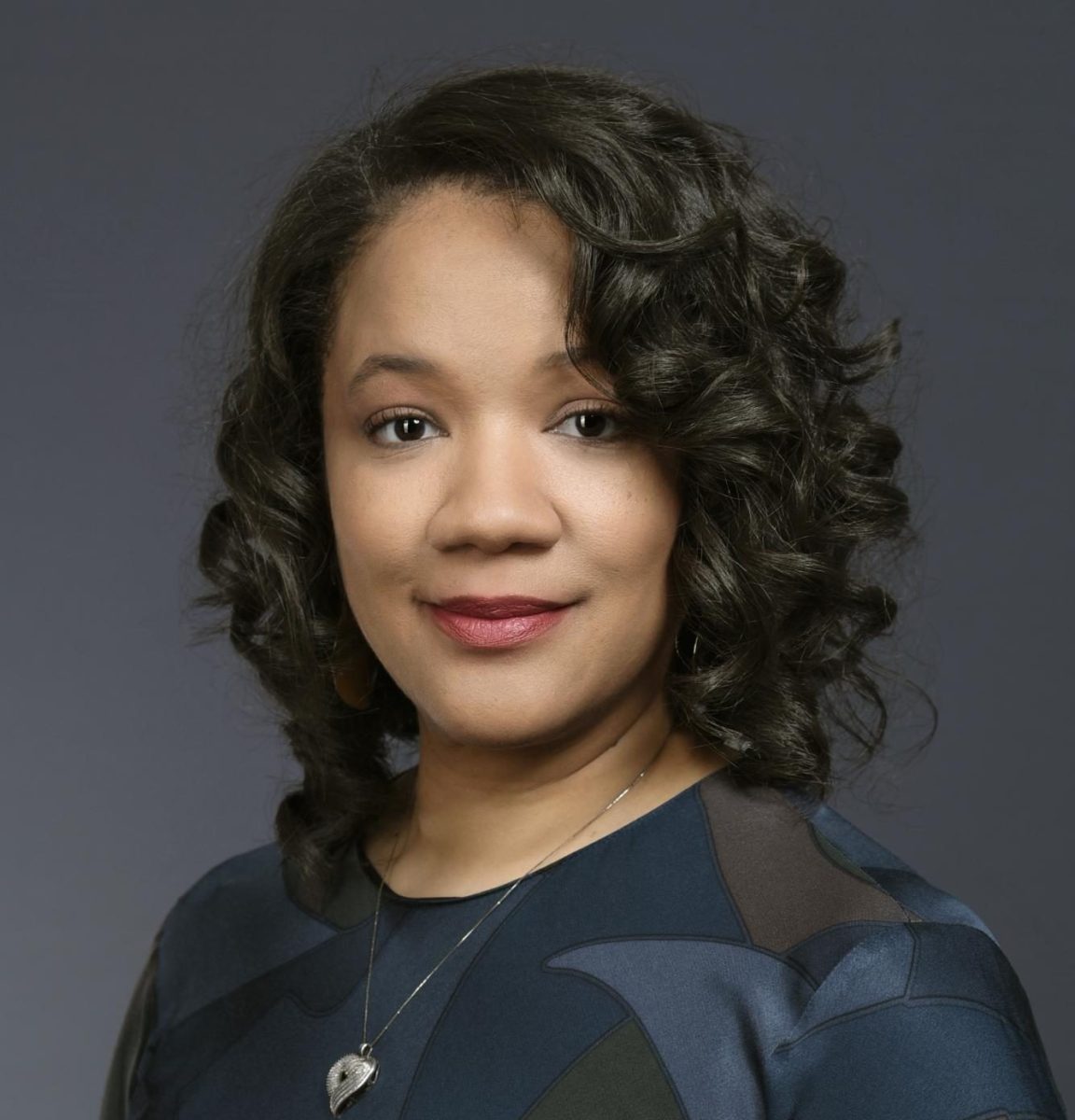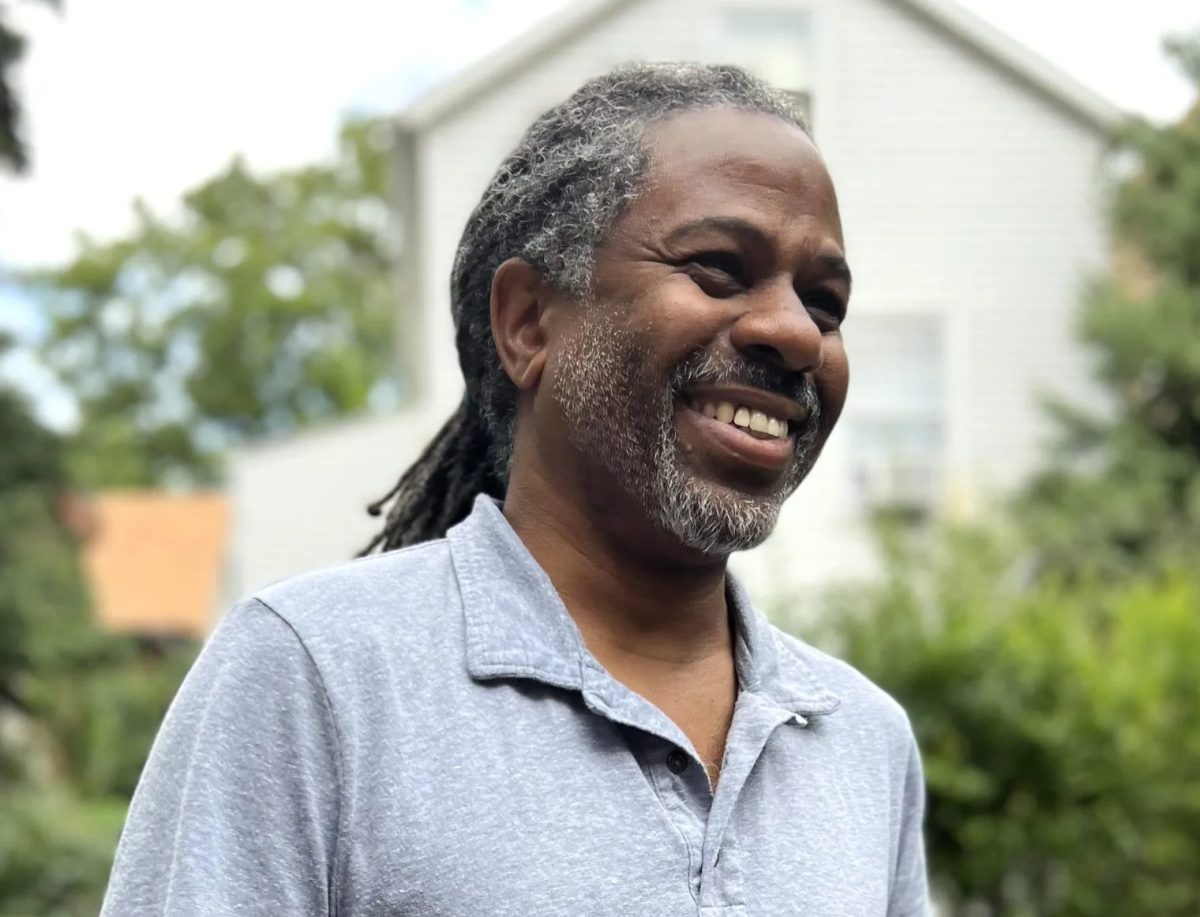1: Decades of displacement
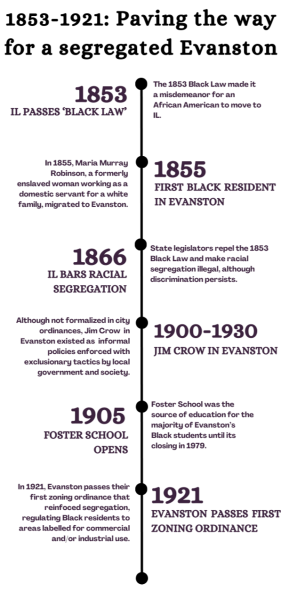 The first Black resident of Evanston was Maria Murray Robinson, a formerly enslaved woman working as a domestic servant for a white family. In 1855, she migrated to Evanston, which, at the time, was a section of Ridgeville Township located by the newly designated site for Northwestern University. Murray Robinson would later become a member of the First Methodist Church of Evanston, marry George Robinson and help found the Second Baptist and Mount Zion Baptist Churches.
The first Black resident of Evanston was Maria Murray Robinson, a formerly enslaved woman working as a domestic servant for a white family. In 1855, she migrated to Evanston, which, at the time, was a section of Ridgeville Township located by the newly designated site for Northwestern University. Murray Robinson would later become a member of the First Methodist Church of Evanston, marry George Robinson and help found the Second Baptist and Mount Zion Baptist Churches.
During the late 1800s, Evanston grew exponentially, and so did its African American population. The destruction left by the Great Chicago Fire in 1871 spurred wealthy, white Chicagoans to seek larger properties in the suburbs, with many opting to move up the north shore to the bordering town of Evanston. Between 1880 and 1900, Evanston grew from 4,400 to 19,259 residents, and the swelling upper-class population had a demand for domestic servants.
In 1900, there were 737 African Americans living in Evanston. Motivated to leave the South by hostile conditions of Jim Crow laws and violent lynchings, and drawn to the north by promise of opportunity, hundreds of thousands of Black Americans moved north during the Great Migration. While many migrants settled on Chicago’s South Side, suburbs such as Evanston saw significant demographic change as well.
“The negro population of north shore towns steadily is increasing, and in Evanston the newcomers are deemed especially objectionable by authorities, as there are four times as many cases of assault and larceny, according to police figures,” reported a Chicago Tribune article published on Jan. 22, 1904. The article goes on to detail a plan by Evanston citizens to “reviv[e] an old scheme of a town for negroes, to be located near Niles Center [the modern-day intersection at Lincoln Avenue and Oakton Street in downtown Skokie].”
By 1920, Evanston’s total population was 37,234, almost doubling 1900’s population of 19,259. The Black population had grown to 2,522, and approximately 84% of Evanston’s Black adults were southern.
“A lot of rich people started moving to the North Shore,” said Ron Butler. “The word was in the South that they needed domestic workers in the north. A lot of people in Evanston came from a place in the south called Abbeville, South Carolina.”
“That’s how we got here,” added Cheryl Butler. “My family’s from South Carolina.”
The murder of Anthony Crawford—a wealthy Black landowner—by a lynch mob in Asheville, South Carolina in 1916 spurred an influx of Black emigration from the city. Among the travelers were the ancestors of Ron Butler. Beverly Mason’s family traveled from the south as well.
“My great aunt was born in Richmond, Virginia,” said Mason, a lifetime Evanston resident. “She came this direction to go to college. She met a man who was working for a family, she got with him, and they lived in Winnetka. She was able to do domestic work and provide hair and grooming services for people. They lived in a coach house, then when he came back from war, they purchased their own home. I imagined people came here for a better life.”
The growth of Evanston’s Black population only spurred more movement from the South, as word of mouth and newspapers carried tales of northern living through the country.

“It was said that a lot of Black people couldn’t read. That’s a lie,” Mason said. “They could read, but they didn’t tell anybody that they could read. They were able to read newspapers from all over the country that were dropped off in the South. These people heard that there was freedom [in the north] and that Black people could buy and purchase property and could make a life. However, if Black people went to areas that were isolated, out on their own, there were massacres.”
“I am told that in many of the southern cities bulletins and sign boards are flashing reports of the need of negro labor in and around Evanston, and commending the living conditions here,” said former Evanston health commissioner Clarence T. Roome in a 1923 quote to the Evanston-News Index. “The situation is becoming serious, as no effort is being made to care for the increasing population which now exceeds 5,000 colored people.”
White Evanstonians were not happy with the sudden demographic change. Animosity towards the Black population built, manifesting in outwards resentment and social exclusion. Jim Crow policies were widespread in the early 1900s, as white Evanstonians generally adopted exclusionary opinions and practices, whether official city code or not.
Evanston’s west side—located on a floodplain, separated from the city’s downtown areas and the lake and consisting of many undeveloped lots—provided an ideal location for white realtors to steer Black residents from white neighborhoods. Properties in the neighborhood had unpaved streets, some lacked running water and transportation was less accessible.
In “Immigration from south, health menace,” an article published June 13, 1923, the Evanston News-Index wrote that “the influx of negroes from the South has given the health department considerable trouble in an attempt to cope with the housing conditions and the insanitary manner in which the new comers are living in overcrowded quarters, according to the report of Dr. Clarence T. Roome, health commissioner.” The article described how some homes had as many as twelve families in a ten-room house, while wells that supplied drinking water for three families were built within twenty feet of toilets. The limiting of Black migrants to the Fifth Ward caused overcrowding and unlivable conditions for many families.
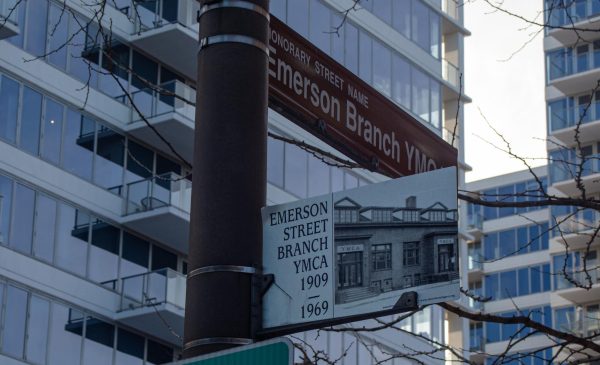
While housing physically segregated the city, divided social services and recreational facilities were both a product of and contributor to separation. In Aug. 1909, sponsors funded a branch of the YMCA open to Black men after the Evanston YMCA denied membership from African Americans. The Emerson Street YMCA was dedicated on July 5, 1914, and within a few years the center grew to provide social services for the community and support Black Northwestern University students prevented from living in campus housing. Foster School, founded in 1905, was the source of education for the majority of Evanston’s Black students and the city’s source of employment for Black teachers until its renaming and relocation in 1969 and 1979.
“A community was developed in the west side of Evanston,” said Beverly Mason. “In many neighborhoods, people owned their homes. At that time, African Americans could not rent apartments on Ridge Avenue, and certainly not beyond the [modern-day] Fifth Ward. Very few Black people were living beyond the Fifth Ward.”
The City’s plan to maintain its “character”
White Evanstonians, concerned with Evanston’s increasing diversity and industrialization, wished for the town to remain dominated by high-value single-home residential properties. In 1917, the city’s Small Park and Playground Association published a book entitled Plan of Evanston.
“For a full half century Evanston has had a character,” the first chapter of Plan of Evanston began. “People have thought of it as a place distinct, somehow, from the other suburbs of Chicago—a place where certain material and moral advantages were enjoyed.”
Plan of Evanston referred to Dodge Avenue, centrally located in the present-day Fifth and Second Wards, as an ideal diversion of traffic away from the rest of the city and drafts a plan to make this area the industrial center of the city.
“It will be seen by glancing at the map of Evanston that Dodge Avenue is the best street on the west side of the city that can be developed for through north and south traffic. It is destined to play a very important part in the development of this section of Evanston… serving as it does the factories and brick yards along its route,” it read. “Furthermore, this street is destined to receive the heavy traffic of market wagons and motor trucks coming from the farms to the west of Evanston.”
In a section on Districting and Zoning regulations, the proposal asserted that “without exaggeration…we believe it vital to the wellbeing of Evanston that such a system of zoning and building regulations, at once effective and equitable, be formulated and enforced.”
“Every property owner would like to be protected against the possibility of seeing his property deteriorated and its rent-earning possibilities reduced by the intrusion into its neighborhood of an inferior or inappropriate building,” Plan of Evanston stated. “Evanston is primarily a city of individual homes, and it cannot afford to lose its character.”
The concerns of white realtors and landowners created obstacles for African Americans aiming to move into the city. On Jan. 2, 1918, the Evanston News-Index—a local newspaper that circulated from 1914 to 1935—published “Negroes Unable to Secure Homes Here,” an article detailing a Black real estate firm’s research into Evanston’s housing. The paper found that “insanitary conditions are developing in the negro sections here because of the congestion in many homes…[There is an] alleged plan to ‘freeze out’ the negroes from all parts of Evanston except their own neighborhoods.”
During the Red Summer of 1919, race riots fueled by white supremacy swept through major American cities, including Chicago. In the aftermath of the violence, the Chicago Commission on Race Relations published The Negro in Chicago, a study on racial relations in the city that attempted to diagnose and propose solutions to the city’s tensions.
The study—published in 1922—referred to Evanston’s “growing negro colony,” and repeatedly referenced the “negro problem;” that is, white residents’ aversion to sharing space with Black residents. One public opinion included in the report stated that “by segregation, I did not mean isolation, but the natural grouping together of Negros under wholesome conditions, but which permitted their contact through employment, through meetings, for the common good, with the dominant race.”
The Negro in Chicago echoed the already common opinion that African American residency lowered property values. “One difficulty of Negroes in handling their own housing problem is the attitude of real estate mortgage and loan concerns with respect to property tenanted or likely to be tenanted by Negroes. Such property is assumed to be a bad risk, and, as a consequence, Negroes are charged more than whites and find it difficult to secure mortgages to assist in purchasing and are greatly handicapped in their efforts to improve property.”
After the Red Summer, zoning ordinances became a popular legal method to consolidate and separate Black communities away from white ones. Ordinances could dictate where more expensive single-family homes should be built, essentially excluding lower-income populations from living in these areas. At the time, no one was more influential in crafting these kinds of ordinances than Harland Bartholomew.
The City of Evanston hired Harland Bartholomew and Associates in 1919 to conduct urban planning and consult for a draft of their own zoning ordinance. Bartholomew was a consultant for at least 11 cities adopting zoning ordinances during the 1918-1921 time period, including Washington DC, Omaha, Nebraska, and Detroit, Michigan, and he was city planner for St. Louis, Missouri for 37 years. He is regarded now as an influential proponent of segregationist policies. Harland Bartholomew and Associates remained present in the north Chicago suburbs—with an office in Northbrook—for at least another 70 years, as the firm aided in the city planning of Oak Park, Northfield and others. The firm’s influence on Evanston’s policies continued through the century, as he conducted surveys of the city through the late 1930s, and the Evanston Review reported on January 30, 1941 that Harland Bartholomew was the planner behind a newly revised city zoning ordinance.
On Jan. 19, 1921, the city of Evanston passed its first zoning ordinance, a form of legislation which had already been used in other towns to enforce segregation. The regions which the ordinance designated as Class “A” (or single-family residential) were located largely along the lakefront and in Evanston’s northeast corner, and these areas became practically impossible for African Americans to occupy. Nearly all locations where Black Evanstonians were living were labeled for commercial and/or industrial use, which set these neighborhoods up for pollution and health risks that followed living near manufacturing structures.
“Right after coming home from World War One, my great uncle Lawrence H. Edwards and [his wife] Cecelia H. Clark Edwards bought property on the 2100 block of Prairie Avenue, where Haven Middle School is standing today,” said Mason. “The school board bought their property from them in 1921. [Lawrence and Cecelia], in turn, purchased three homes in the west side of Evanston, which was the area where most Black Americans were living.”
The ordinance put the city’s unofficial segregating practices, which were already in motion, on paper. Its zones gave a reference for future discriminatory racial steering, as realtors directed Black residents towards Class B or lower areas instead of the more desirable (and 95-100% white by 1960) Class A areas.
A student of Northwestern University, David Bruner, conducted a study from 1923-24 that surveyed Black Evanston residents and investigated Evanston’s housing practices. With regards to the zoning ordinance of 1921, he stated that the use map “indicates the kind of territories the Negroes find open to them: largely commercial and light industrial areas along the tracks, and districts so remote from transportation facilities as to be comparatively undesirable. It will be seen that practically no Class ‘A’ residential district is occupied by Negroes and none is likely to be opened.”
As Black Evanstonians were corralled into tighter, industrialized quarters, Evanston continued to expand—its population grew from 37,234 in 1920 to 63,338 in 1930.
As the African American population in Evanston continued to grow, a group of white Evanstonians living on Wesley became worried that Black families may start moving past Emerson Street, ultimately forming the ‘West Side Improvement Association.’ With the help of national real estate provisions and the normalcy of racism within Evanston’s social culture, the Association successfully prevented many Black families from moving into white neighborhoods.
In its 1928 code of ethics, the National Association of Real Estate Brokers outlined several provisions regarding neighborhood integration and property management. Specifically, Provision G stated: “Only persons of the Caucasian race may own, lease, occupy or use any of said [single family] lots, except that any persons may be employed on said premises as domestic servants or chauffeurs.” This nationally protected guideline ultimately solidified the Evanston real estate market’s top strategy for keeping the city as white as possible: racially restrictive covenants. 
In the context of real estate, a covenant is a legally binding agreement such as a lease. And in the context of 1930s Evanston, it was a legal loophole that prevented Black families from moving anywhere beyond a triangular area of land in west Evanston that housed 84% of the Black population at the time.
An anecdote from former Evanston resident Mary Barr’s book Friends Disappear recounts when a Black couple, Mr. & Mrs. Walden attempted to buy a house on Wesley Avenue in 1933. Met with an attorney hired by the ‘West Side Improvement Association,’ the couple was told to buy a house further West within the boundaries of the fifth ward—but instead of submitting to the attempted dissuasion of the attorney, Mr. and Mrs. Walden went through with the sale. Citing a decline in property values, the attorney and neighborhood association brought the case to court, ultimately evicting the Waldens from their home.
Through written and unwritten real estate practices, west Evanston became the only area of the city that remained “open” for Black residents. The ‘West Side Improvement Association’ soon had a monopoly on the Evanston housing market through these racially restrictive covenants. Houses already owned by Black residents in other areas of the city were bought for high prices in exchange for the relocation of the Black homeowners to west Evanston. If white Evanstonians believed a house was ‘at risk’ for being bought by a Black family, they would purchase it before it went on the public market. So despite the exponential growth in Evanston’s African American population throughout the 1930’s, there was little to no expansion beyond the west end of the city.
On a nationwide level, the Federal Housing Administration was created in 1934 in an attempt to stabilize the housing industry in the midst of the Great Depression. Through the creation of the FHA, the country’s current system of mortgage lending was established—a system that further alienated Black Americans from homeownership in the twentieth century, and nationalized systems of redlining. Through lending standards that outlined components such as property type and racial makeup of neighborhoods, the FHA gave federal and state governments power over what properties could be bought and sold—and by whom those properties could be sold to.
“The (HOLC map) helped over the coming decades to make it difficult for African Americans Evanstonians to get loans to refinance housing in (the West) section of town,” said Wiese. “It limited the amount of money that would be available in the community through loans to maintain, to purchase, to upgrade housing.”
Within the 1934 FHA Underwriting Handbook, “residential security maps” outlined the ‘security’ of certain real estate investments through color coded maps of neighborhoods and cities. Developed by the Home Owners Loan Corporation, these maps turned unspoken covenants into legally outlined language that further divided communities—including the city of Evanston.
Between 1935 and 1940, the HOLC created a comprehensive map of Evanston—with ratings of ‘best,’ ‘still desirable,’ ‘definitely declining,’ and ‘hazardous’ assigned to each residential neighborhood. Descriptions of each rating are provided for each region of the map.
Area B43 stretches along Evanston’s lakeshore—labeled as ‘best,’ its description reads “This is an area of fine old large houses in a very beautiful location, with large trees on well kept properties…Living in the area are some of Evanston’s fine, old wealth families, and in spite of the age of the structures, the neighborhood continues as one of the most desirable along the shore. Schools and churches are particularly good and transportation is available by either elevated or commuter train.”
Provided underneath the description of each area is a summary of the population demographics. For area B43, this reads:
“POPULATION:
Shifting or Infiltration: Jewish threatening
Foreign Families: 5% Nationalities: Jewish
Negro: 0%
Class and Occupation: Upper middle class- middle class”
In contrast, Evanston’s predominantly Black neighborhood—Area D2—is labeled as ‘hazardous.’ The HOLC’s description reads, “This neighborhood houses the large negro population living in Evanston. It is somewhat better than the average negro district in that the bulk of the houses are one family detached units in anything but a congested district for this class of population. Here live the servants for many of the families all along the north shore.”
Its population demographics read:
“Shifting or Infiltration: Negro
Foreign Families: 5% Nationalities: Italian
Negro: 90%
Class and Occupation: Servant class- relief”
Areas away from the lakefront within central and south Evanston are primarily labeled as ‘still desirable,’ with areas further west labeled as ‘definitely declining.’ Different reasons for lower ‘security ratings’ included low income households, ‘mediocre appearance,’ traffic congestion, and the presence of student housing complexes near Northwestern’s campus—but among the various justifications for lower ratings, the presence of African American households remained a consistent detail in the reports of ‘definitely declining’ areas. 
The HOLC map of Evanston gave a federal stamp of approval to the work of the ‘West Side Improvement Association’ and the private Evanston real estate brokers who had been constructing racially restrictive covenants since the onset of the Great Migration. It set a precedent for how Evanston would operate, and solidified the struggles faced by African American Evanstonians when trying to apply for loans and homeownership.
In a 2021 interview with The Evanstonian, San Diego State University Sociology professor and primary investigator of “Black Housing, White Finance: African American Housing, Home Ownership and Segregation, Evanston, IL, 1910-1940,” Andrew Wiese emphasized the precedent set by the HOLC map for African American Evanstonians.
In a further attempt to ‘maintain the character’ of Evanston following the influence of the HOLC map, the city rendered a zoning report assessing the 1939-40 land usage, reported by Bartholemew and Associates. The report found that while single family homes made up the highest proportion of land use, the city had a significantly greater amount of multi-family homes than other comparable suburbs. At the end of the Great Depression, not only was the city concerned with ‘maintaining its character,’ but optimizing the housing market following the national economic crisis—through this report, zoning codes and policies legitimized by the FHA were implemented even further.
Despite the federally endorsed ways in which African Americans were limited within the city of Evanston, the Black population almost tripled from 1940-1960, with the fifth ward consistently remaining Evanston’s predominantly black neighborhood.
“There’s this sense that Evanston is a place of opportunity, but also restriction. A place of economic opportunity, but also limitation,” said Wiese. “And a place where an African American community mobilized together to produce a community, to expand that community, to challenge the limits that were placed on them.”
 In 1958, Martin Luther King Jr. visited Evanston for the first time. King was focused on housing discrimination and understood how Evanston was emblematic of the issue. Despite King’s stature as a respected leader of the ongoing Civil Rights Movement, no Evanston hotel would offer him lodging during this visit, and he stayed in the basement of Beth Emet The Free Synagogue. King delivered two lectures on progressive Christianity at Northwestern and a speech at the synagogue on discrimination—specifically, housing discrimination.
In 1958, Martin Luther King Jr. visited Evanston for the first time. King was focused on housing discrimination and understood how Evanston was emblematic of the issue. Despite King’s stature as a respected leader of the ongoing Civil Rights Movement, no Evanston hotel would offer him lodging during this visit, and he stayed in the basement of Beth Emet The Free Synagogue. King delivered two lectures on progressive Christianity at Northwestern and a speech at the synagogue on discrimination—specifically, housing discrimination.
A few years later, in 1962, King visited Evanston for the second time, conducting multiple speeches on integration throughout the city. After his third and final trip to Evanston in 1963, he returned to Winnetka to be the keynote speaker for the North Shore Summer Project’s 1965 rally for equal housing on the North Shore. The rally included 10,000 protestors and was a response to a plan to build an all-white residence in Deerfield.
King’s numerous visits proved to be necessary to start the removal of past redlining and zoning policies, ones that had been put into place as early as the 1910s-1920s. The visits gave light to new discussions among the Community of Relations Commission of Evanston City Council, which would later be vital to the process of challenging housing discrimination in Evanston.
Through these discussions, the drafting of the first fair housing ordinance commenced, resulting in backlash from the community, even after this discussion was brought up by Northwestern students and local Chairman of the United States Citizen Council for Freedom in Residence in Illinois Donald Frey.
In June 1966, the City Council passed an open housing ordinance by a vote of 10-8, but this was vetoed by the mayor at the time, John D. Emery, resident of Evanston and former president of the Evanston Historical Society.
An Evanston Review article, published on June 16, 1966, quotes Mayor Emery as saying that “[the housing ordinance] did not allow our citizens, the business being regulated, neighborhood and other community groups or the Community Relations Commission an adequate opportunity to study the ordinance in its final form.”
In 1967, an official fair housing ordinance was passed, the first of many to come. According to an article written by the African American Red Dress Network, the Fair Housing Ordinance “established a city-issue real estate license that could be revoked if individuals were found to be practicing discrimination in the rental, sale and advertising of housing.”
There were issues with this ordinance, one that was meant to be anti-discriminatory for all. The ordinance fell victim to criticism. From the same article on African-American Red Dress Network, “exemptions granted to property owners, financial institutions and real estate agencies made [the Fair Housing Ordinance] ineffective”.
Following months of deliberation from 1966-1967, the Federal Fair Housing Act was adopted just a week after the assassination of Dr. Martin Luther King Jr on April 4, 1968.
On April 11, 1968, Congress passed the federal Act, prohibiting discrimination in housing on the basis of race. The president at the time, President Lydon Johnson, signed the Fair Housing Act (also known as the Title VIII), which was initiallysupposed to serve as a following part to the Civil Rights Act of 1964. But, due to King’s assassination, “President Lyndon Johnson utilized this national tragedy to urge for the bill’s speedy Congressional approval,” the U.S Department of Housing and Urban Development wrote in their database. “President Johnson viewed the Act as a fitting memorial to the man’s life work.”
The Federal Fair Housing Act is as follows: “Title VIII of the Civil Rights Act of 1968 (Fair Housing Act), as amended, prohibits discrimination in the sale, rental, and financing of dwellings, and in other housing-related transactions, because of race, color, religion, sex (including gender identity and sexual orientation), familial status, national origin, and disability. It also requires that all federal programs relating to housing and urban development be administered in a manner that affirmatively furthers fair housing.”
Just weeks after the Federal Act was passed, another Evanston fair housing ordinance was passed with a final vote of 15-1.
“It is hereby declared to be the policy of the City,” the ordinance read, “to promote and protect fair housing opportunities throughout the City and to acknowledge the value of diversity within our community, to secure to all persons living and/or working, or desiring to live and/or work in the City of Evanston, an equal opportunity to view, purchase, lease, rent, or occupy real estate without discrimination…”
Both the city attorney Jack Siegel and Mayor John Emory were against this law passing. Siegel believed that the ordinance wouldn’t be good for Evanston and that it intruded on the jurisdiction of Illinois, and that these types of laws should be set in place at the state and federal levels. Emory, who had voiced his opinion back in 1966 with the first draft of the ordinance, agreed.
Emory released a statement, as published on May 2, 1968 in the Evanston Review. “I hold with you the same hope for achieving full equality and freedom for every American,” Emory said. “I differ with you only in my conclusion that a higher level of government has the responsibility for enacting any necessary open occupancy legislation. Therefore, the ordinance becomes effective without my signature.”
Evanston’s ordinance went into effect on May 19, 1968, without the approval of Emory. This was very basic, containing manlimitations, ones that didn’t apply to owner-occupied buildings. This idea came to light in 1969, when a young Black couple in Evanston, Andrew and Elenor Devold, attempted to lease an apartment on Dewey Avenue. Because the Fair Housing Review Board couldn’t force the owner to lease them the apartment, they bypassed them and went straight to the U.S district court. They won, and the owner was forced to let the Devolds’ sign a one year lease. This case lit a fire under the City Council, one that was now aware of issues of discrimination that continued to happen under the new ordinance.
On June 29, 1969, the Fair Housing Review Board (FHRB) was expanded to seven members, who had the ability to investigate, hold hearings, issue recommendations, and publish findings about unfair housing regulations in Evanston. It ensured that many couples or families, such as the Devolds, would be able to rent apartments or houses in the future, if of course, they had the money.
Until 1969, Evanston banks refused to grant loans to Black residents. Because of
this, many Black residents could not afford to purchase or rent property in neighborhoods with higher property values. The increased power to the FHRB ensured that, beginning in 1969, Black Evanstonians could take out loans, leading to greater financial independence.
Your donation will support the student journalists of the Evanstonian. We are planning a big trip to the Journalism Educators Association conference in Nashville in November 2025, and any support will go towards making that trip a reality. Contributions will appear as a charge from SNOSite. Donations are NOT tax-deductible.







